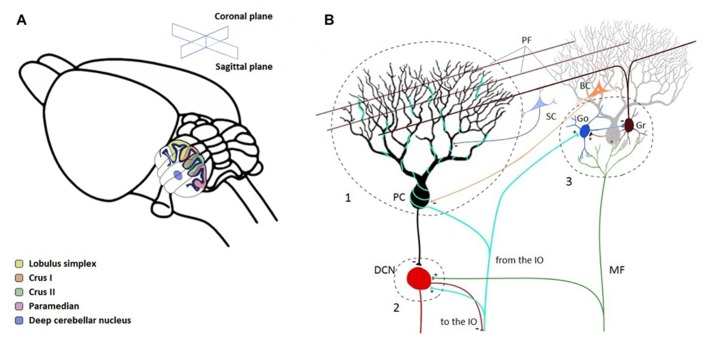FIGURE 2.
Description of the cerebellar cortex substrate for local field potential oscillation interactions. (A) General cerebellar organization, here from a rodent brain. Potent LFP GCL oscillatory sites can be recorded from within the cerebellar cortex posterior lobe, including the crus lobules, Crus II and Crus I, and the paramedian lobule (PM). For both the primate and the rodent, the PM lobule is a common GCL LFP oscillation recording site, at the level where the virtual slice is taken. (B) Cerebellar circuitry, with an emphasis on the potential interaction sites between different oscillatory phenomena. Highlighted are the Purkinje cell (PC) afferent region (1), the deep cerebellar nuclei (2, DCN), and the Golgi cell (Go)–granule cell (Gr) circuits in the GCL (3). Interactions are discussed in the text. IO, inferior olive; MF, mossy fiber; PF, parallel fiber; SC, stellate cell; BC, basket cell, the latter two provided for context.

